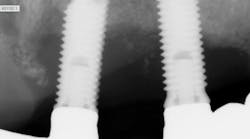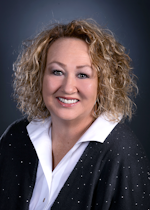Whether you’re new to dental assisting or a veteran of the profession, when your boss says, “I think we should do implants,” you may feel as in the dark as I did. It can be overwhelming to learn a new skill, especially one with so many different variables. I’d like to share some basics to help you help your practice with implant procedures.
Who and who is not a candidate?
Not everyone who wants an implant is eligible. There are several factors to consider when selecting the ideal implant patient. It should be someone with good overall health, good oral health, adequate bone levels to support the implant, and healthy gum tissue free of periodontal disease. The success rate for those who smoke or take certain medications is lower for various reasons. A patient’s health history will serve as a foundation for determining what treatment to do.
Parts and pieces
There are several parts and pieces. If you’re like me, you’ve assisted in restoring implants, so you know some of the working parts. When it comes to placing them, however, it’s a whole new world. The parts are crown restoration, a retaining screw, an abutment, and the implant.
When it comes to these working parts, being organized is key to having it all together—the parts, a surgical guide if you use one, models, a lab case pan, instructions, you name it. It’s like the kitchen sink and then some. Not all cases are like this, but to ensure you have what you need when you need it, it’s important to stay organized. I like to look at least five working days ahead to make sure that anything I need is ordered and will arrive on time. Frustrations can mount when you have a patient in the chair but not everything you need to proceed with treatment.
What do you need on surgery day?
The answer is: that depends. Every doctor is different. If you’ve worked with more than one dentist, you know what I mean. There are different implant systems, tray setups, and much more. My advice is to get everything together the first time and take a picture of it. This will help you learn not only the instruments, but where on the table they need to be placed. Work with your doctor to figure this out, but just know it will likely change. As your team evolves, so will your setup, so keep updating everything you do.
Glidewell has some helpful tips on procedure trays and setups at this link.
What’s in your water?
The answer is: all kinds of germs that want nothing more than to infect someone. Keep in mind placing an implant is surgery and keeping a sterile field is very important for implant success. The water in the lines in our office is not sterile; therefore, we use sterile saline to rinse and keep the area clean. Keep plenty of this on hand so you don’t run out.
It’s all about that bone
Are you doing a bone graft or placing a membrane? This is often necessary when there isn’t enough bone to support a future implant. There are many options available and each circumstance is different, and your doctor will decide which system will work best in each situation. Clear as mud, right? Exactly!
To graft or not to graft, to use a membrane or not? Each patient has very individual issues, and there is no one-size-fits-all when it comes to implants. Your doctor will decide what he or she wants ahead of time and all you need to do is communicate with the doctor a few days beforehand so that you have all the necessary materials ready to go.
Is infection control different?
No, infection control is not different. There is only one way to do infection control, and that’s the right way. So, handle this like anything else in the office, using the standard or universal precautions. These precautions state:
- Universal precautions (UP), originally recommended by the CDC in the 1980s, were introduced as an approach to infection control to protect workers from HIV, HBV, and other bloodborne pathogens in human blood and certain other body fluids, regardless of a patients’ infection status. UP is an approach to infection control in which all human blood and certain human body fluids are treated as if they are known to be infectious. Although the BBP standard incorporates UP, the infection control community no longer uses UP on its own.
- Standard precautions (SP), introduced in 1996 in the CDC/Healthcare Infection Control and Prevention Advisory Committee "1996 Guideline for Isolation Precautions in Hospitals," added additional infection prevention elements to UP in order to protect health-care workers not only from pathogens in human blood and certain other body fluids, but also pathogens present in body fluids to which UP does not apply. SP includes hand hygiene; the use of certain types of PPE based on anticipated exposure; safe injection practices; and safe management of contaminated equipment and other items in the patient environment. SP is applied to all patients even when they are not known or suspected to be infectious.
- Transmission-based precautions (TBP) for contact-, droplet-, and airborne-transmissible diseases augment SP with additional controls to interrupt the route(s) of transmission that may not be completely interrupted using SP alone. The different types of TBP are applied based on what is known or suspected about a patient’s infection.
There are many implant systems and many scenarios to consider for implant and patient selection. This is not your call, but the doctor’s call. So, follow the doctor’s lead, communicate about all working parts and necessary materials, and get organized. After a few procedures, you’ll get the hang of what the doctor needs, and what questions to ask to lead to a successful procedure. Use all the tools you have—tray setup pictures, lab case pans, and checklist—to help you prepare and stay on top of your day.




